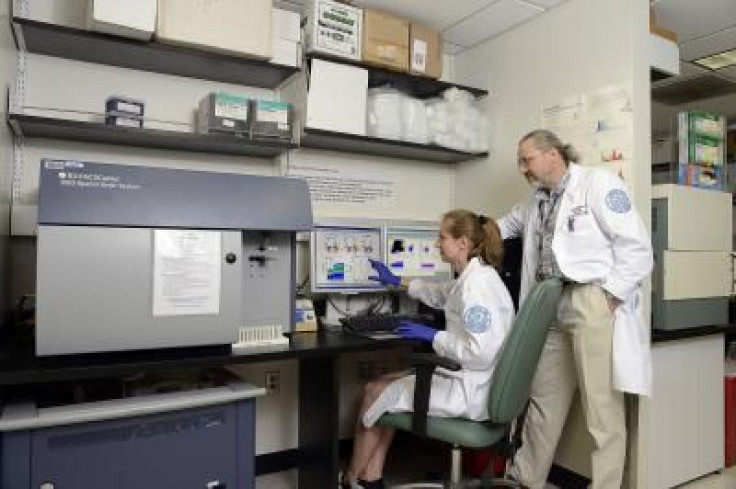Molecular Robots To Deliver Better Targeted Therapies For Cancer, Autoimmune Diseases

Molecular robots composed of organic materials may soon offer targeted therapies for diseases such as cancer and rheumatoid arthritis, whose treatments often resemble a Faustian bargain with life itself.
Damned if you do, damned if you don't.
But medical scientists envision therapeutics for cancer and autoimmune diseases that would function less like a cellular carpet-bombing and more like the precision-guided "smart bombs" of modern warfare. A mixture of antibodies and short strands of DNA, so-called molecular automata would target disease-causing cells while leaving healthy cells alone.
The short strands of DNA, called oligonucleotides, can easily be tailored by scientists in a laboratory for any customized sequence, according to a collaboration of American researchers publishing Sunday in the journal Nature Nanotechnology.
"This is a proof of concept study using human cells," Sergei Rudchenko, director of flow cytometry at Hospital for Special Surgery in New York City, told reporters. "The next step is to conduct tests in a mouse model of leukemia."
In the study, Rudchenko and his colleagues teamed with researchers at nearby Columbia University to design molecular robots capable of identifying multiple receptors on cell surfaces, thereby discerning between different subpopulations of cells. Investigators experimented with white blood cells, which all carry the CD45 receptor but differentiate into subtypes carrying receptors CD20, CD3, or CD8.
The automata they created each carried an antibody component with a receptor for one of the white blood cell subtypes, as well as a DNA component tailored to closely match other robots carrying other variances of the antibody.
When mixed into blood from healthy donors, the robots of varying antibody components binded to their respective receptors. At the same time, the DNA components of varying robots nearby recognized their close cousins, triggering a cascading reaction. DNA bits ripped apart and joined in more complementary patterns, forming a new, unique strand like a Transformer toy from the 1980s.
Moreover, investigators also demonstrated the ability to program DNA strands to fluoresce when exposed to a solution, literally highlighting the cells for targeted therapy.
Maria Rudchenko, a research associate at the hospital, described the findings. "The automata trigger the growth of more strongly complementary oligonucleotides," she told reporters. "The reactions occur fast: In about 15 minutes, we can label cells."
Researchers plan to next test the technique in an animal model, preparing ultimately for human clinical trials leading to improved chemotherapy and drug agents for autoimmune disease.
Source: Rudchenko, Sergei. Molecular Robots Can Help Researchers Build More Targeted Therapeutics. Nature Nanotechnology. 2013.



























